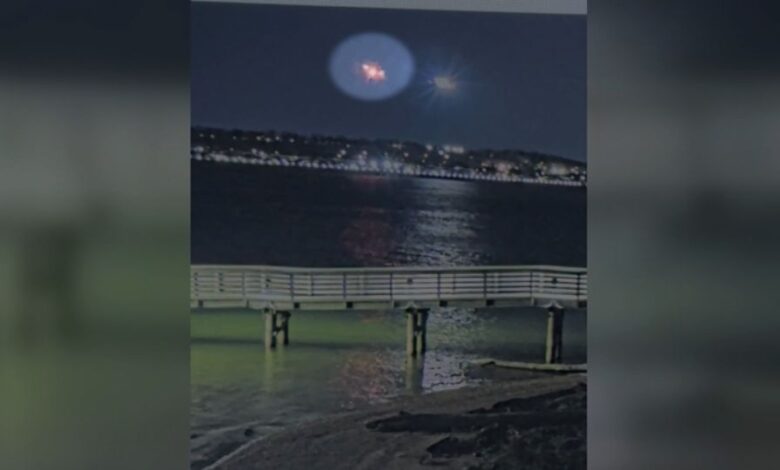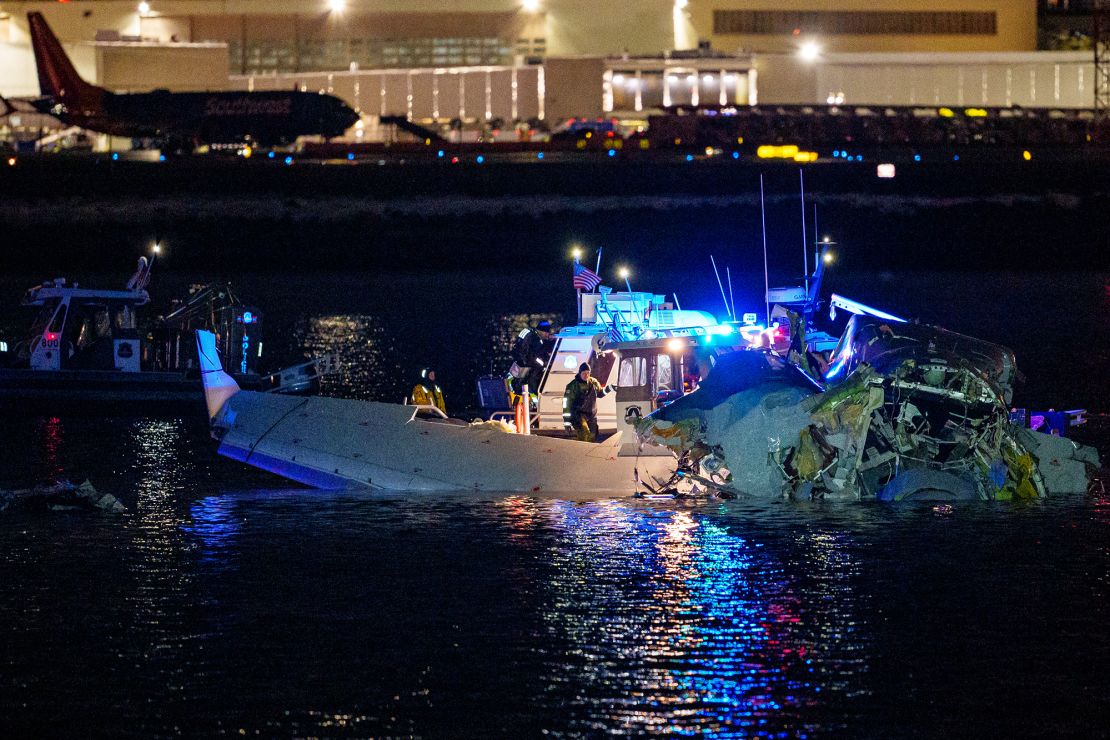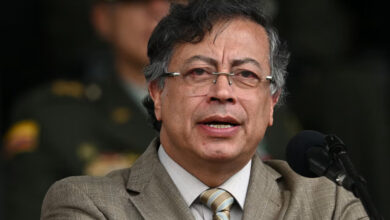
A grayish-blue overcast sky formed a shimmery curtain over the setting sun in the image the teenager posted to his Instagram Stories. The up-and-coming skater wrote “ICT->DCA,” referencing the airport codes for the departure and destination cities.
Lane, his mother as well as other budding skating stars, their families and coaches from the US and Russia awaited their departure after attending the US Figure Skating Championships and a development camp for young athletes.
In all, 60 passengers and four crew members were on board the commercial jet when it took off at 5:39 p.m.
The two-hour, 35-minute journey would deliver them to one of the country’s most congested and complicated flight approaches, a runway at Reagan National Airport, just south of the capital’s brightly illuminated marble monuments.
It ended as the deadliest US aviation disaster in nearly a quarter century.
On a clear night, the nearly full Bombardier CRJ700 jet approached Runway 33 around 8:48 p.m. when it collided midair with a US Army Black Hawk helicopter carrying a crew of three on a training flight. Videos captured a giant red-orange fireball, followed by an eerie trail of smoke and burning debris. The two aircraft plunged into the dark, frigid Potomac River. No one survived.
The victims represent a cross section of the legions who traverse America’s congested airways on any given day, including a biology professor and popular soldiers, longtime airline pilots and flight attendants, union steamfitters returning from a hunting trip, an attorney and a pair of young associates, along with the aspiring figure skating stars, their family members and coaches.
Timothy Lilley, whose son, Sam Lilley, was the first officer on American Airlines Flight 5342, said he spent 20 years as a helicopter pilot in the Army. Both he and his son shared a passion for flying. Now, Lilley told Fox 5 Atlanta, he has to reconcile that passion with the cause of his son’s death.
“It hurts me because those are my brothers,” he said of the Army helicopter crew. “Now my son is dead.”
Passenger texted husband: Flight lands soon

At Reagan National Airport, Hamaad Raza received a text message from his wife: The flight was about 20 minutes from touching down. He later showed the message to a reporter for CNN affiliate WUSA.
As Flight 5342 made its subsequent descent just miles south of the White House, the UH-60 Black Hawk flew at a low altitude along what is known as Route 4. The flight path hugs the eastern shore of the Potomac and is reserved as a special corridor for law enforcement, medevac, military, and government helicopters. Helicopters in the corridor must be at or below 200 feet above sea level.
The military helicopter may have been flying outside its approved flight path, at a higher altitude than it was supposed to be, and at least half a mile off the approved route, the New York Times reported.
Members of the US Army’s 12th Aviation Battalion’s Bravo company – based in Fort Belvoir, Virginia – the soldiers on board had experience with the crowded and tightly controlled airspace over DC.
The helicopter pilot and co-pilot had at least 1,500 hours of flight time between them – a significant amount, according to a senior Army official, considering their average flights are around two hours. Jonathan Koziol, chief of staff for Army aviation, described the soldiers as “a fantastic crew. Very experienced at what they were doing.”
The two pilots at the controls of Flight 5342 were also experienced. The captain had been flying with PSA Airlines – which operated the flight for parent carrier American – for nearly six years, according to company CEO Robert Isom. The first officer had nearly two years with the airline.
About 8:43 p.m. Wednesday, an air traffic controller at Reagan National contacted the commercial jet.
“Can you take Runway 33?” the controller asked, directing the jet to a shorter runway that intersects the busy main runway.
“Yeah, we can do 33,” the pilot responded.
“Can confirm Runway 33, Runway 33 cleared to land …”
The soldiers on the Black Hawk were conducting what Defense Secretary Pete Hegseth described as an annual nighttime training on “a continuity of government mission.” The missions are routine: In the event of a catastrophe, helicopters are often employed to usher government officials to safety. Crew members had night vision goggles, the defense secretary said.
The Black Hawk flew past the Lincoln Memorial and over the Tidal Basin. As the inky black Potomac spread out below the helicopter, an air traffic controller at Reagan National contacted the military pilot.
“Do you have the CRJ in sight?” the air traffic controller asked, referring to the regional jet. The controller instructed the military aircraft to look out for the jet.
Before the pilot responded, the controller instructed the helicopter to “pass behind the CRJ,” according to a feed of the air traffic communication.
“Pat-25 has aircraft in sight,” the helicopter pilot responded with his call signal. He requested “visual separation,” meaning he would visually maintain a safe distance from the jet. The tower confirmed and granted the pilot permission to visually navigate and avoid Flight 5342.
That final communication was followed by more than 10 seconds of silence before the giant fireball erupted above the Potomac. The audio captured audible gasps, including a loud “oooh” in the background.
“Oh, my!” someone is heard saying in the background of radio transmissions. Air traffic controllers are heard scrambling to direct jets to nearby airports.
“Tower, did you see that?” the pilot of one aircraft is heard asking on the radio transmission.
“Looks like there were flares up in the air,” a pilot reported to the tower at one point.
“We’re handling that right now,” the controller responded.
An unknown pilot told the tower he saw “flares from the opposite side of the Potomac.”
“Apparently both aircraft involved are in the river,” the controller said later.
At the time of the collision, one air traffic controller was working two different tower positions, handling both local and helicopter traffic, an air traffic control source told CNN. The source said the setup was not uncommon. An internal preliminary Federal Aviation Administration report, however, said staffing was “not normal for the time of day and volume of traffic,” The New York Times reported.
The National Transportation Safety Board, which is investigating the collision, has recovered both the flight data and cockpit voice recorders – known as the black boxes – from the jet. The helicopter’s flight data and voice recorder – combined in one black box – has also been recovered.
‘Crash! Crash! Crash!’

After weeks of icy temperatures in the region, Wednesday night felt comparatively balmy. Jimmy Mazel, 17, and his girlfriend decided to eat dinner at Gravelly Point Park in Arlington, Virginia. Located just north of Reagan National, the park is a popular destination to watch arriving and departing planes soar overhead. An evening of dining and plane-spotting was interrupted, he said, by “a white light falling out of the sky.”
Nearby, Roy Best was standing on his building’s rooftop when he heard a loud noise and saw a bright light flare in the distance.
“I turned to the side and I saw like a big spark,” he said. “And then, you know, just something falling.”
At first, Best said, he thought it might have been fireworks. A little later he learned the truth.
When a direct line with Reagan National Airport rang that Wednesday night, David Hoagland, president of the Washington DC Firefighters Local 36, said first responders expected a routine report of a flight in distress. Instead, they heard: “Crash! Crash! Crash!” he recalled.
As members of the union rushed to a pier to board a fireboat, burning debris rained down over the Potomac. First responders arrived to find wreckage submerged in the shallow water and almost immediately started finding victims, Hoagland said. Some plane passengers were still strapped in their seats, but removing them proved difficult as sharp pieces of debris ripped the wetsuits worn by first responders.
The plane was found upside-down in three sections in shallow water – including the partly submerged wing and mangled fuselage. The helicopter wreckage was also found.
Gravelly Point Park, the destination for plane watchers, is now the site of a makeshift morgue.
At least 41 bodies – 28 of those remains identified – have been recovered from the murky depths of the Potomac, with near-zero visibility in the water and other difficult conditions hampering the search effort. The plane’s fuselage will need to be removed so the remaining bodies can be retrieved, DC Fire and EMS Chief John Donnelly said.
Clouds and cold rain rolled in on Friday – as flights landed and took off and search crews continued their work – magnifying the pall the tragedy has cast over the city and the nation.
CNN’s Pete Muntean, Aaron Cooper, Andy Rose, Sara Smart, Aaron Eggleston, Dalia Faheid, Emma Tucker, Amanda Jackson, Robert Shackelford, Jamiel Lynch, Karina Tsui, Jillian Sykes, Alexandra Skores, Haley Britzky, Katie Bo Lillis, Michael Williams, David Williams, Holly Yan, Antoinette Radford, George Ramsay, Justin Lear, Taylor Galgano, Zenebou Sylla and Zoe Sottile contributed to this report.




